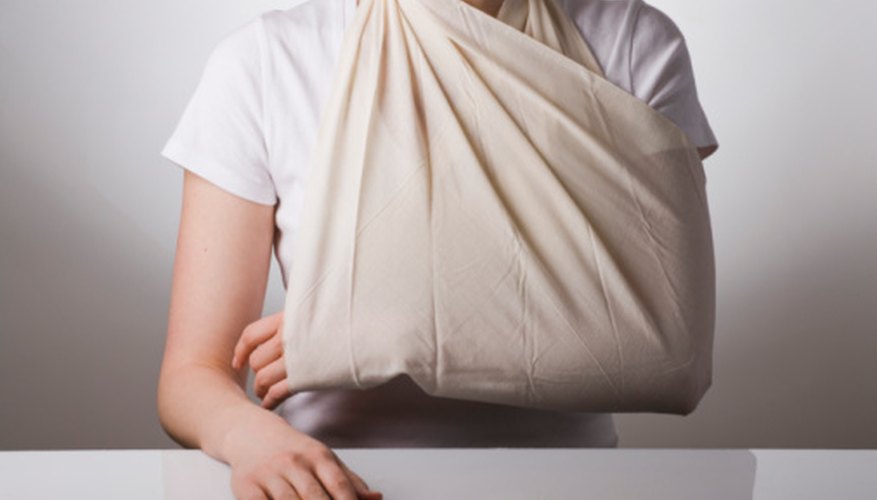Hopefully you will never have to make your own sling for a real injury, but if so, using a scarf is a simple solution. Scarf slings can also be made for use in Halloween costumes or for plays and skits. Scarf slings can be made in a few simple steps from square scarfs or rectangular scarfs folded into a square. Any kind of scarf, from knitted wool scarfs to decorative fashion ones will work, as long as the material doesn't have large holes the arm could slip through. Scarf slings can add a realistic look to a supposedly injured actor or help an actually injured person to keep his arm still until he can seek professional medical attention.
- Hopefully you will never have to make your own sling for a real injury, but if so, using a scarf is a simple solution.
- Any kind of scarf, from knitted wool scarfs to decorative fashion ones will work, as long as the material doesn't have large holes the arm could slip through.
Tie two diagonal corners of the scarf together in a secure knot. For example, if the square scarf, or rectangular scarf folded into a square, is laid out on the table in front of you, tie the upper left corner and the lower right corner together in a secure knot.
Place the knot over the head of the injured individual so that the scarf drapes down over her chest in a loop and the knot rests on her shoulder or behind her neck.
Gather the scarf loop together and pull it up in front of the hand of the injured arm.
Slowly slide the hand and injured arm into the scarf loop. Continue sliding the arm into the loop until the entire forearm is tucked inside.
Tuck the elbow and hand into the loop ensuring that the entire arm is protected within the sling. If the scarf you are using is large, and you have excess fabric on either end of the elbow or the arm, this excess fabric can be folded over the front of the arm and pinned to the sling with a large safety pin for extra support, if desired.
TIP
Scarf slings can also be used to keep an injured shoulder and upper arm in place. Create a sling in the same way, but place it across the chest perpendicularly with the knot of the sling resting under the armpit of the injured person. Position the sling loop so that it holds the upper arm securely and close to the torso.
